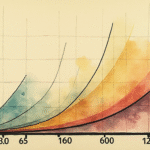Introduction to Global Debt Trends
The Institute of International Finance (IIF) reported that global debt reached a new high of 324.3 trillion dollars in the first quarter of the year, surpassing the previous record of 324 trillion dollars set in the third quarter of the previous year.
Key Contributors to Debt Growth
According to the IIF’s economic research team, China, France, and Germany were the countries that significantly contributed to this debt increase in the first quarter of 2025.
Emerging economies accumulated a staggering 106 trillion dollars in debt by the end of the first quarter, representing 245% of their combined GDP.
- In the first quarter alone, emerging market debt increased by 3.5 trillion dollars, with China accounting for two trillion dollars of that growth.
Risks and Concerns
The IIF report, released from its headquarters in Washington D.C., highlights the risk that emerging markets might take advantage of lower interest rates implemented by advanced economies to stimulate their own economies amidst the ongoing tariff disputes.
Emre Tiftik, the IIF’s director of research, cautions that if the trade context continues to deteriorate, economic activity will further slow down.
There’s a concern that emerging market governments might feel compelled to adopt expansionary fiscal policies due to low interest rates in advanced economies, leading to further increases in emerging market debt.
Debt in Latin America
Among the emerging economies in Latin America, government debt averaged 66% of GDP in the first quarter of 2025. This is a decrease from 70.7% of GDP in the same period of 2024.
- Among the seven most developed economies in the region, including Mexico, Peru stands out with the lowest government debt at 33% of GDP, according to the IIF.
- Mexico’s government debt stood at 47.8% of GDP by the end of the first quarter, marking a significant increase from 42.4% of GDP in the same period of 2024.
Key Questions and Answers
- What is the current state of global debt? Global debt has reached a new high of 324.3 trillion dollars, surpassing the previous record set in the third quarter of the previous year.
- Which countries have significantly contributed to this debt growth? China, France, and Germany have been key contributors to the recent surge in global debt.
- What risks does the IIF highlight regarding emerging markets? The IIF warns that emerging markets might exploit lower interest rates in advanced economies to stimulate their own economies amidst ongoing tariff disputes.
- How does Latin America fare in terms of government debt? Among Latin American emerging economies, Mexico’s government debt is notably lower than the regional average, with Peru having the lowest at 33% of GDP.






